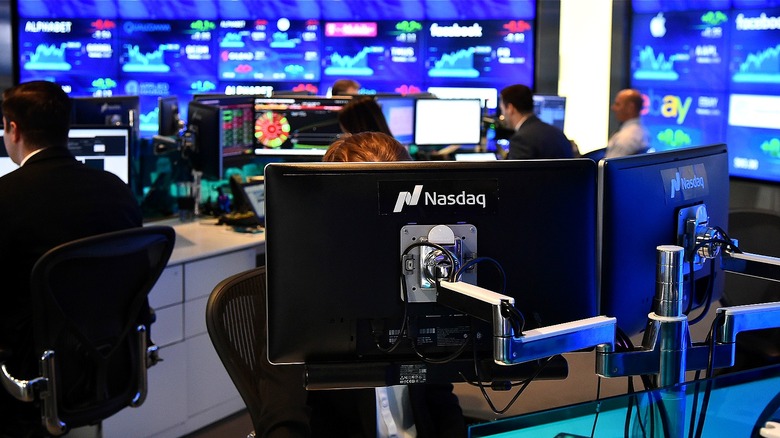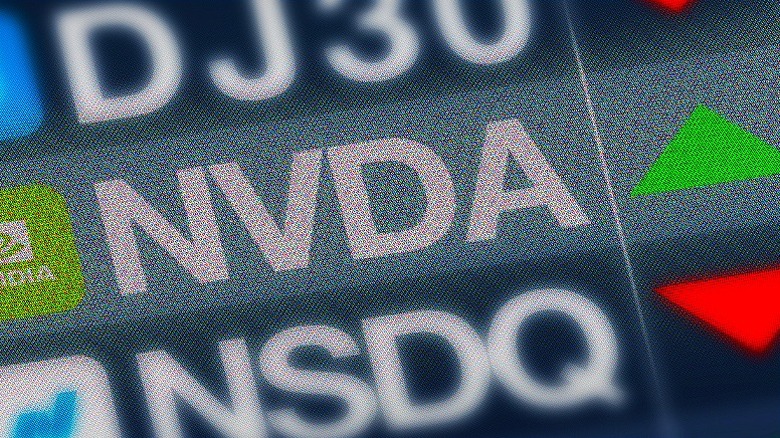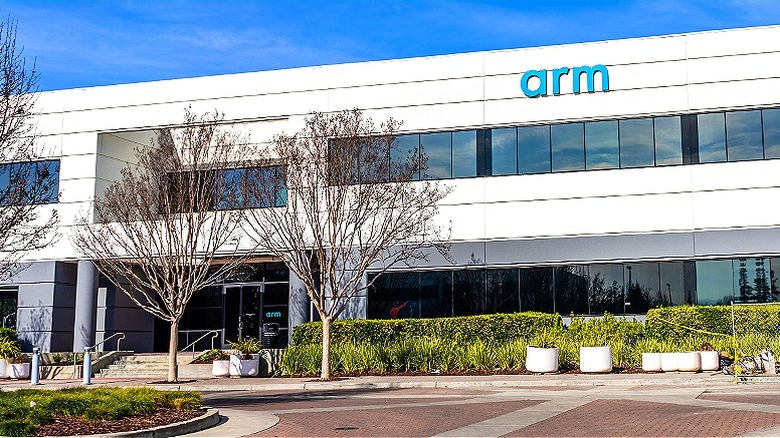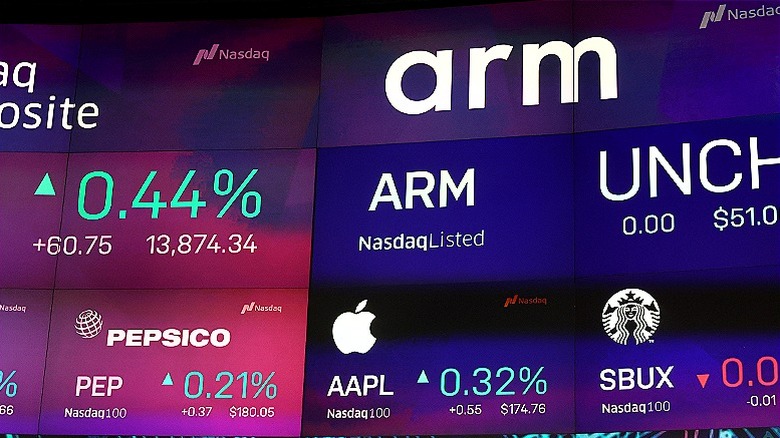A Nvidia Stock Alternative Billionaire Investors Appear Keen On
The omnipresent chipmaker Nvidia is a true force of industrial nature (in fact, many consider Nvidia the world's "most important stock"). Founded in 1993 as a brand dedicated to delivering a discrete GPU system to advance computing technology to its next level, the company drove a wave of innovation that truly reinvented the industry. As is the case with so many innovative technology companies, the brand's founders were unhappy with the direction their previous employers were heading (in this case Sun Microsystems), and envisioned a different approach.
As of this writing, Nvidia (NASDAQ: NVDA) showcases a market cap of $3.39 trillion and sales revenue that has, frankly, exploded in the last year ($26.974 billion in 2023 versus $30.040 billion in just the second quarter of 2024). Earnings per share was also transformed in 2024, rising from $0.17 in 2023 to a 585% increase and clocked at $1.19 in 2024. With all this momentum heading in the company's favor, why then would billionaire investors seem to be turning away from the brand?
Well there may be a few key factors at play sitting deep beneath the gleaming financials. NVDA underwent a stock split at 10:1 in June 2024, returning its share price back to Earth. Before this split, the cost per share was simply too high for the average investor to really consider a purchase (over $1,200 per share). There is a psychological barrier here, but that's likely not the prime target for billionaire sellers. Here's a closer look at the trending movement.
Some billionaire investors chose to sell Nvidia in 2024
In the first quarter of 2024, eight prominent billionaire investors sold off nearly 8 million shares of NVDA. It's unclear what motivated each of these investors to dump such volume back into the market, but it's entirely possible that one or more of them were simply looking to sell at a profit and reengage with the market in other ways — or hold out for a potential dip to rebuy. It's worth noting that Nvidia looks poised for greater competitive engagement with Intel and AMD in the coming months, potentially diminishing its standing in the market, if only in small measure.
Nvidia has gone all in on AI tech in recent years, shifting the company's focus slightly from its predominantly GPU-focused market strategy. Investing in AI today likely features NVDA stock as a prominent fixture. However, as with any emerging technology, it's possible that a competitor might generate a first-mover advantage ahead of Nvidia, leaving its profits middling. Anyone getting into the market in search of AI-sector buys should look to spread their investment out across multiple options, further diluting the value that NVDA potentially offers going forward.
ARM appears to be a solid alternative
One avenue that some of the billionaire Nvidia dumpers have focused on instead is in the British-based Arm Holdings (NASDAQ: ARM). Ken Griffin and Israel Englander both poured capital into this semiconductor giant (over 1,000,000 and 420,000 shares, respectively).
This isn't to say that ARM is a better investment now or heading into the future. Instead, it's an acknowledgment that two prominent hedge fund managers used the proceeds of their NVDA sale to fund, perhaps directly, an investment in this indirect competitor. Arm Holdings isn't in the GPU game; however, it does create CPU devices, a key resource in the continued development of everything that Nvidia and many other brands produce.
Analysts give ARM a soft "buy" rating, and the company's financials appear to be trending in a positive direction with growing revenue over the last three years (with an essentially flat change between 2022 and 2023) and reduced cost-of-good-sold figures each year since 2021. The company is also pouring an increasing volume of capital into research and development, topping $1 billion in 2023. While there's a lot to like about ARM, some fundamental features should still give retail investors pause when considering a buying opportunity.
The allure lies in its royalties and licensing revenues
ARM is trading at just over $150 per share (as of this writing, October 18), placing it around the same general price point of post-split NVDA. Committing capital for the retail investor is therefore roughly the same whether you opt for one or the other (in comparison to the severe confidence a typical investor would need to place in Nvidia before June when a buy-in would have commanded 10 times the volume). Note, Arm Holding's stock is also trading near the top (but not at an overly concerning level) of its 52-week range.
With a market cap of $160 billion, there's dramatically more room for price appreciation than NVDA, which is far larger and trading right up against its 52-week high. Similarly, while NVDA has showcased consistent growth over the last year, ARM is up 214.16% in this time, but essentially stagnant in the last three months (with an 11.15% value gain over one month). This makes it a potentially valuable addition to a tech-focused portfolio as there appears to be continued upside while it moves through what could ultimately be the tail end of a price stall.
What makes ARM interesting to investors, and those with deep pockets in particular, is where the Arm Holdings revenue figures come from. It takes in all of its earnings from royalties and licensing agreements. Other brands in the tech space rely on ARM for the computational power they need to develop their own products (companies that include Nvidia), and ARM generates revenue through partnerships in this realm. The result is a revenue stream that's likely to increase whenever the value of other tech firms does. The more Nvidia, Microsoft, and the like earn, the more they need the services of brands like Arm Holdings. (Check out 10 tips for investing in stocks as a beginner.)
Valuation figures leave little room for short-term movement
While the revenue source for Arm Holdings is poised for solid growth through any kind of technology sector bull-market surge, its valuation and other stock market indicators should give traders just a bit of anxiety. While it's true that risk is inherent to any investment opportunity, and that no company will showcase perfect numbers when it comes to a financial analysis, ARM features two particularly alarming indicators.
For one, the company's valuation is pegged at 80 times its forward-year earnings. Meaning Arm Holding's value today is calculated at 80 times what estimates suggest it will earn next year. A good figure sits somewhere between 10 and 25, so this massive leap in value for Arm Holdings may indicate the company is overvalued and will have trouble delivering on the promised value to shareholders.
Secondly, its P/E ratio is also alarmingly high: 392.38 (as of October 18). Coming together, it may point to a company that can't sustain its large growth for much longer. Analysts suggest that because of its uniquely strong position, there's cause for the company to enjoy a premium valuation, but these numbers might indicate to a careful investor that growth at this rate may be unsustainable in the long term. Of course, stocks can behave somewhat unpredictably even at the best of times. It remains to be seen what ARM will do for investors, but billionaire traders seem to have taken an interest in its future.




